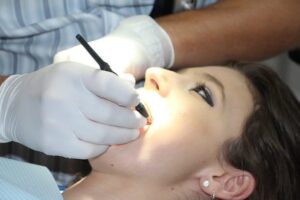It’s hard to think about how much pain cluster headache vs trigeminal neuralgia causes. Imagine a tiny jackhammer hitting you over and over in the head or a lightning bolt zapping through your face. Neither of those things would be fun.
But being able to tell the difference between these two very bad types of head and face pain is important for getting the right treatment and keeping the symptoms under control. Learn what makes severe headaches and face pain different from each other!

Table of Contents
What Are Cluster Headaches?
Cluster headaches, also known as “suicide headaches,” are a rare form of headache that affects less than 1% of the population. They’re excruciatingly painful and frequently described as the worst pain that humans can experience. The term “cluster” refers to the pattern of cyclical attacks, usually lasting between six weeks to three months, followed by periods of relief.
Symptoms
The primary symptom of cluster headaches is severe and intense pain, often described as a hot poker or ice pick being stabbed into the eye or temple. The pain usually occurs on one side of the head and can last anywhere from 15 minutes to three hours. Other symptoms include:
- Watery eyes
- Drooping eyelid
- Runny nose
- Sweating
- Restlessness
Causes
The exact cause of cluster headache disorders is still unknown, but researchers believe that it may involve the hypothalamus, a part of the brain responsible for regulating body functions such as sleep and hormones. Triggers for cluster headaches can include:
- Alcohol consumption
- High altitudes
- Changes in daylight saving time
- Certain medications
What Is Trigeminal Neuralgia?
Trigeminal neuralgia, also known as “tic douloureux,” is a neuropathic disorder that affects the trigeminal nerve, responsible for sensation to the face and motor functions such as chewing. It is considered one of the most painful conditions known to medicine, with episodes of pain lasting anywhere from seconds to a few minutes.
Symptoms
The main symptom of trigeminal neuralgia is sudden and severe facial pain conditions, often described as sharp, shooting, or electric-like sensations. The pain typically affects one side of the face and can be triggered by simple activities such as brushing teeth or touching the face. Other symptoms may include:
- Twitching or spasms in facial muscles
- Loss of sensation on one side of the face
Causes
Trigeminal neuralgia can be caused by compression or damage to the trigeminal nerve. This can be due to various factors, including:
- Aging
- Multiple sclerosis
- Tumor pressing on the nerve
How Are They Diagnosed?
Both cluster headaches and trigeminal neuralgia have distinct symptoms that can help doctors make a diagnosis. In addition to discussing your medical history and conducting a physical exam, your doctor may also order imaging tests such as an MRI or CT scan to rule out any underlying conditions.
Blood tests and neurological examinations may also be performed to provide more information. If you are experiencing any symptoms, it is essential to visit experts like this facility that offers headache and migraine treatment options in Houston to explore the best course of action.
Living with Pain: Managing Daily Life with Cluster Headache vs Trigeminal Neuralgia
Cluster headache vs trigeminal neuralgia sufferers must deal with pain and make changes to their daily lives. To deal with these neurological conditions, it’s important to go to support groups, therapy, and be honest with your healthcare workers. Even though the road can be hard, having a strong support network, knowing your triggers, and sticking with your treatments can make your life a lot better.
Does this article help you? Explore our website to find more helpful and fun stories that could help you




